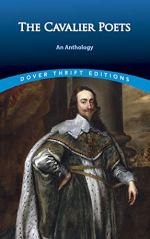|
This section contains 287 words (approx. 1 page at 400 words per page) |

|
The Grasshopper Summary & Study Guide Description
The Grasshopper Summary & Study Guide includes comprehensive information and analysis to help you understand the book. This study guide contains the following sections:
This detailed literature summary also contains Quotes and a Free Quiz on The Grasshopper by Richard Lovelace.
The following version of the poem was used to create this guide: Lovelace, Richard. "The Grasshopper." Poetry Foundation. https://www.poetryfoundation.org/poems/50714/the-grasshopper-56d22dfef2bcc.
Note that all parenthetical citations within the guide refer to the lines of the poem from which the quotations are taken.
Richard Lovelace (the name is pronounced like the word “loveless”) was born in the winter of 1618. He was the oldest son of a wealthy family, and had four brothers and three sisters. His father, Sir William, was a member of the Virginia Company, who played a major role in the colonization of the Americas. Sir William died in the Siege of Groenlo when his son was only nine. Two years later, Lovelace was sent to Sutton’s Foundation and then to school in London, though no record of his education survives. When he was only thirteen, he was appointed to an honorary position in King Charles I’s court. Afterwards, he studied at Oxford, and completed a degree at Cambridge.
Lovelace was a member of the school of cavalier poets, wealthy supporters of King Charles I who were known for their elaborate dress and their fondness for the good life. They also chose traditional monarchist values over the growing movement toward Republicanism. Lovelace remained a staunch supporter of the king as he began his poetic career. In 1641, Lovelace was arrested because of his royalist position, but was later released. In 1648, he was again imprisoned, and was released into a world in which the king had been executed and the monarchist cause seemed at an end. Lovelace wrote his first volume of poetry during this time of turmoil. Less than a decade later, in 1657, he died.
Read more from the Study Guide
|
This section contains 287 words (approx. 1 page at 400 words per page) |

|



